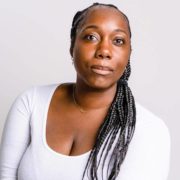“The Well” is a recurring column to remind us of the power we possess in mind, body and spirit.
I have always enjoyed time to myself. Maybe it’s because I was the only child and grandchild on both sides of my family for ten years. I could always find a way to entertain myself in a house full of adults. In fact, as an adult I cherish my personal time and space more than I express. I have even coined the term “forced extrovert” as a way to describe my social movement. Due to my affable nature, people often expect it to be indicative of my overall personality, but I like being alone. However, there was a moment in my life when being alone felt extremely lonely.
– Alone is a state of being isolated. Loneliness is the feeling of dread or sadness that arises due to being alone.–
Six years ago, my ex-husband and I separated and I maintained the family with our two children. Every other weekend our boys would visit him Friday evening through Sunday evening. The house felt large and empty on the weekends. The children were away and for the first time it felt awkward being home by myself. For months I would lock the main house door and my bedroom door on Friday evening and not open either doors until Sunday afternoon. The windows in the room were dressed with room darkening curtains and I would hide in my sea of pillows for 44 hours, this was not the same ‘me’ time I once enjoyed since being a child. While I allowed myself to go through this uncomfortable period of transition, I understood it was only temporary. I also understood that I had to go through this journey full of bramble and rocks on the path. Despite the discomfort, the one truth I held in my mind and spirit during this time was that I was growing.
Living in this new age of “Social Distancing” many are feeling the impact of disconnect.. For those who live alone, having little to no contact with others can stir feelings of isolation and loneliness. Others may live with a partner or family members with divergent energy which also can feel isolating. The human desire to belong and feel a part of a social or family structure is a component of Maslow’s Hierarchy of Needs. We are social creatures. We need each other. However, how do we meet this need, which is integral for our health, while we also engage in a seemingly counterintuitive directive also for our health? It begins with how we see ourselves in relation to others. The most important aspect of this realization is how we ourselves.
The time I spent self-isolating, years ago, was one of the most impactful experiences in my life. It was dark, it felt uncomfortable, and it felt like it would never end. However, in the midst of this contrast I found a practice of self-reflection that changed my life forever. It was during this time that I embraced a deeper practice of yoga that targeted the flexibility of my mind and spirit. I began to embrace the feelings that surfaced during isolation. I explored the areas I hid deep within my subconscious. Wrapped in a cocoon made of 1,500 thread count sheets and hypoallergenic down alternative material, I connected to me. The first step in reestablishing the connection to self, is to address your fears associated with being alone. I wrote about this in my previous column. Taking the steps outlined in that piece is a great way to settle the mind and body. After bringing awareness to your mind and body, ask yourself these initial five questions:
- Am I taking care of myself physically and emotionally?
- What do I desire for myself physically and emotionally?
- What steps am I currently taking to achieve my goals in those areas?
- If I were my own best friend, am I a good friend?
- What do I desire to reflect to others?
As I walked out of the house on an early spring Sunday morning after months of exploring these questions, my neighbor stopped and asked what I had been doing with myself because I was floating. And I was. I felt lighter and excited about who I was becoming along this journey. I now have a renewed appreciation for my alone time. I stopped locking myself in my room. All the room darkening curtains were replaced with sheer white fabric. I transformed my home to reflect how I feel on the inside. Today home is a safe space filled with light and green plant life in every room. My house is my favorite place to be alone and joyful. In this new age of increased time alone, how will you choose to emerge?
Andi Pyatt is an educator, entrepreneur, wellness professional, and author (Julia Belle) of the new children’s book, Sunflower’s Breath. She holds an undergraduate degree in Psychology/Neuroscience from Williams College and a graduate degree in Health Science from The Johns Hopkins Bloomberg School of Public Health.
By Andi Pyatt
Featured Image, Andi Pyatt is an educator, entrepreneur, wellness professional, and author. (Courtesy Photo)

